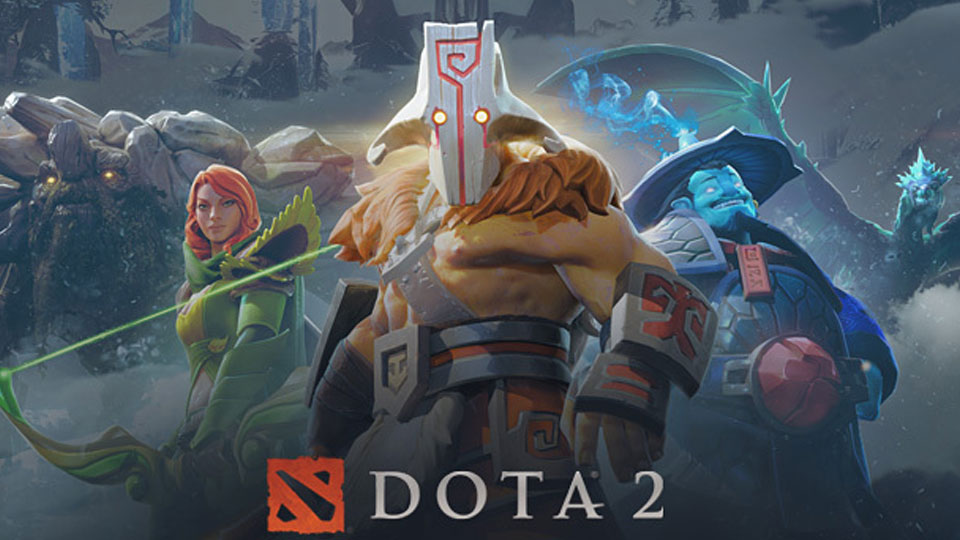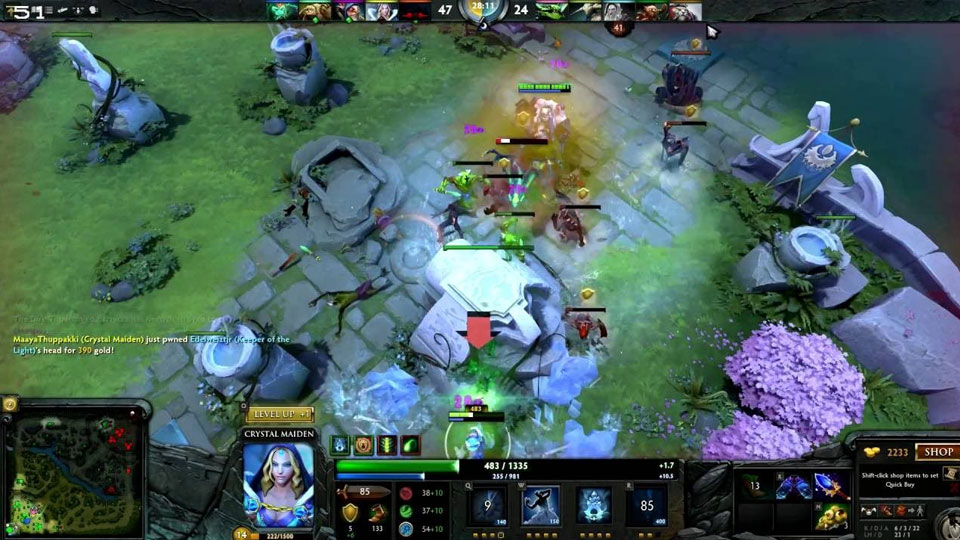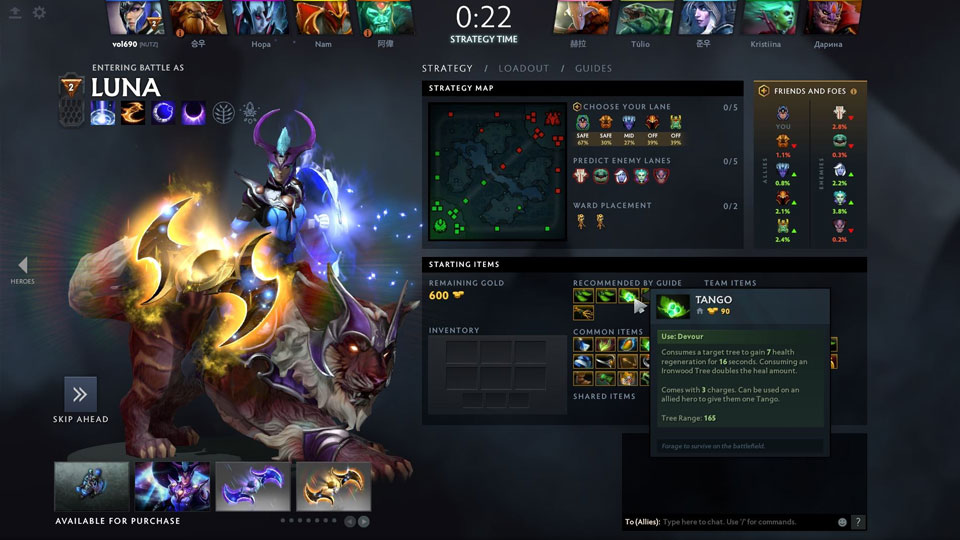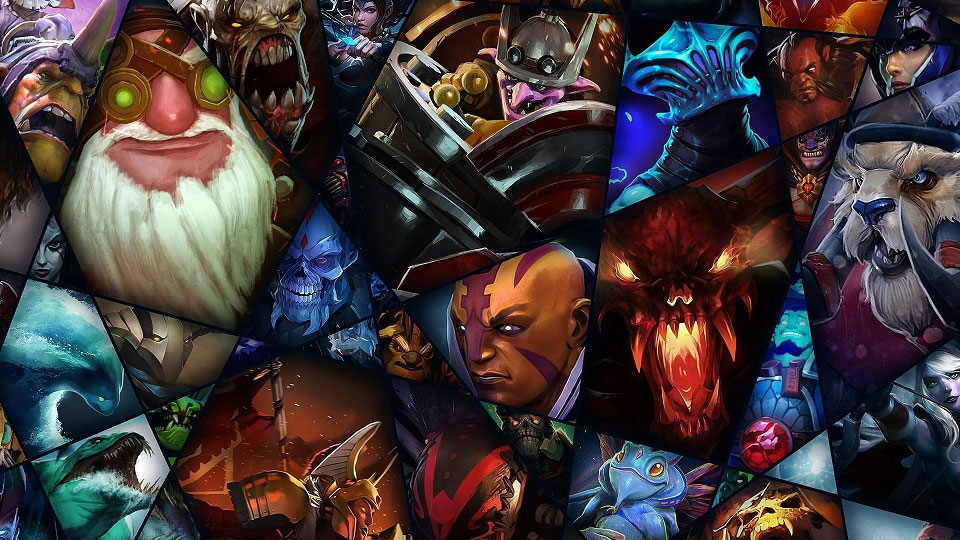Dota 2, developed and published by Valve Corporation, has solidified itself as one of the most prominent and competitive multiplayer online battle arena (MOBA) games since its release in 2013. With its deep gameplay mechanics, strategic depth, and thriving esports scene, Dota 2 continues to captivate millions of players worldwide. This comprehensive guide will explore the key features, gameplay mechanics, competitive scene, community engagement, strategies, and future potential of Dota 2 on PC.

Dota 2 is a multiplayer online battle arena game that has become a cornerstone of competitive gaming. Known for its complex mechanics, strategic depth, and a vibrant community, Dota 2 offers a rich and challenging experience for players. This comprehensive guide will delve into what makes Dota 2 a standout title on PC, examining its gameplay mechanics, community engagement, and future prospects.
The Evolution of Dota 2
Dota 2 is the sequel to the popular Warcraft III mod, Defense of the Ancients (DotA). Valve acquired the rights to DotA and enlisted IceFrog, one of the original developers, to lead the development of Dota 2. The game has evolved significantly since its release, with constant updates, new heroes, and an ever-expanding competitive scene.
Key Milestones
- 2013: Dota 2 is officially released after a lengthy beta period.
- 2014: The International, Dota 2’s premier esports tournament, becomes one of the largest esports events in terms of prize pool.
- 2015: Introduction of the Reborn update, which included a new engine, custom games, and a redesigned interface.
- 2018: Introduction of the Dota Plus subscription service, offering advanced analytics, hero progression, and additional content.
Gameplay
Objective-Based Gameplay
The primary objective in Dota 2 is to destroy the enemy’s Ancient, a heavily guarded structure located within their base.
- Lanes: The map is divided into three lanes (Top, Middle, Bottom) where the action primarily takes place.
- Towers: Each lane is protected by towers that deal significant damage to enemy units and heroes.
- Creeps: Non-player controlled units that periodically spawn and march down each lane, providing gold and experience when killed.

Heroes and Roles
Dota 2 features over 120 unique heroes, each with distinct abilities and roles.
- Carry: Heroes that scale well into the late game and are responsible for dealing the majority of the damage.
- Support: Heroes that provide utility, healing, and crowd control to assist the team.
- Mid: Heroes that typically play in the middle lane, balancing between carry and support roles.
- Offlane: Durable heroes that play in the offlane, often focusing on disruption and survivability.
- Roamer: Flexible heroes that move between lanes to create pressure and secure kills.
Items and Economy
Items play a crucial role in Dota 2, providing heroes with additional abilities, stats, and utility.
- Gold: Earned by killing creeps, enemy heroes, and structures.
- Item Builds: Heroes have recommended item builds, but players often adapt based on the game’s context.
- Secret Shop: A special shop located on the map that sells powerful items not available in the base shops.
Game Phases and Strategies
Early Game
The early game focuses on laning, securing farm, and establishing map control.
- Laning Phase: Players focus on last-hitting creeps to earn gold and experience while denying enemy creeps.
- Ganking: Roaming heroes attempt to surprise and kill enemies in other lanes to create advantages.
- Ward Placement: Supports place wards to gain vision and prevent enemy ganks.

Mid Game
The mid game is characterized by increased team fighting, objective control, and strategic maneuvers.
- Team Fights: Teams begin to group up for skirmishes and larger team fights.
- Roshan: Killing Roshan, a powerful neutral creep, provides significant advantages including the Aegis of the Immortal.
- Push and Defense: Teams attempt to push towers and apply pressure while defending their own structures.
Late Game
The late game focuses on decisive team fights, strategic objectives, and high-stakes plays.
- Buybacks: Players save gold for buybacks, allowing them to re-enter the fight immediately after dying.
- Split Pushing: Heroes apply pressure on multiple lanes to force the enemy team to split up.
- Final Push: Teams aim to break the enemy’s base and destroy the Ancient to secure victory.
Popular Heroes and Strategies
Carry Heroes
- Sven: A melee carry with high burst damage and survivability.
- Phantom Assassin: A high-damage carry with critical strikes and evasion.
- Anti-Mage: A mobile carry with strong farming capabilities and mana burn.
Support Heroes
- Crystal Maiden: A support with strong crowd control and mana regeneration abilities.
- Lion: A versatile support with disables and a powerful ultimate ability.
- Dazzle: A support with healing, armor reduction, and a save ability.
Mid Heroes
- Invoker: A complex hero with a wide array of spells and high skill ceiling.
- Storm Spirit: A mobile hero with strong initiation and burst damage.
- Shadow Fiend: A mid hero with high damage output and strong farming potential.

Offlane Heroes
- Axe: A tanky initiator with strong crowd control and damage.
- Timbersaw: A durable offlaner with high mobility and area damage.
- Dark Seer: An offlaner with strong team fight utility and wave clear.
Maps and Environments
The Radiant and The Dire
The map is divided into two sides: The Radiant and The Dire, each with distinct aesthetics and base layouts.
- The Radiant: Characterized by lush forests and vibrant colors, located in the bottom left corner.
- The Dire: A darker, more sinister environment, located in the top right corner.
Key Map Features
- Jungle: Areas between lanes filled with neutral creeps that provide gold and experience.
- Runes: Power-ups that spawn periodically, providing various bonuses such as regeneration, haste, and double damage.
- Shrines: Structures that provide healing and can be activated by the team.
Map Control and Vision
Controlling the map and gaining vision is crucial for strategic play.
- Wards: Placed by supports to provide vision and detect invisible units.
- Observer Wards: Provide vision in a specific area for a limited time.
- Sentry Wards: Reveal invisible units and wards in the vicinity.
Competitive Play and Esports
Ranked System
Dota 2’s ranked system provides a structured environment for competitive play.
- MMR (Matchmaking Rating): Players are assigned an MMR based on their performance, which determines their rank.
- Divisions: Ranks are divided into tiers, from Herald to Immortal, with Immortal being the highest.
The International
The International (TI) is Dota 2’s premier esports event, known for its massive prize pool and high-level competition.
- Prize Pool: Funded by the sale of the Battle Pass, often exceeding tens of millions of dollars.
- Teams: The best teams from around the world compete for the Aegis of Champions.
- Broadcast: Streamed globally with professional commentary, analysis, and coverage.
Regional Leagues and Tournaments
Dota 2’s competitive scene is supported by various regional leagues and tournaments.
- Dota Pro Circuit (DPC): A series of regional leagues and major tournaments that determine qualification for The International.
- ESL One: A major tournament series featuring top teams and significant prize pools.
- DreamLeague: Another prestigious tournament series within the DPC.
Graphics and Technical Performance
Visual Style
Dota 2 features a unique visual style with a mix of dark fantasy and vibrant elements.
- Graphics: High-quality models, animations, and particle effects enhance the visual experience.
- Customization: Players can customize their heroes with cosmetic items, changing their appearance without affecting gameplay.
System Requirements and Optimization
Dota 2 is optimized to run efficiently on a variety of PC configurations.
- Minimum Requirements: Ensures the game is accessible to players with lower-end systems.
- Recommended Requirements: For the best experience, higher-end systems are recommended, offering enhanced graphics and smoother performance.
- Optimization: Regular updates and patches improve performance and address technical issues.
Community and Social Features
Cross-Platform Play
Dota 2 supports cross-platform play, allowing players on different operating systems to compete and cooperate.
Unified Experience: Players can join games and play with friends regardless of their platform (Windows, macOS, or Linux).
Communication and Interaction
Effective communication and teamwork are crucial in Dota 2.
- Voice Chat: Integrated voice chat supports real-time communication within teams.
- Text Chat: Allows players to communicate through written messages.
- Ping System: Provides visual cues for marking locations and communicating non-verbally.
Content Creation and Streaming
Dota 2 has a vibrant content creation and streaming community.
- Twitch and YouTube: Popular platforms where players stream matches, share tutorials, and create highlight reels.
- Workshop: Players can create and share custom items, maps, and game modes.
Updates and Future Content
Regular Updates and Patches
Valve is committed to continuously improving Dota 2 with regular updates and patches.
- Balance Changes: Adjustments to heroes, items, and gameplay mechanics to ensure a fair and competitive experience.
- Bug Fixes: Regular updates to address technical issues and improve gameplay stability.
New Heroes and Features
Dota 2 continues to expand with new heroes, features, and gameplay elements.
- New Heroes: Regularly introduced, each bringing unique abilities and strategies to the game.
- New Features: Potential new game modes, customization options, and quality-of-life improvements.
Long-Term Vision
Valve’s long-term vision focuses on maintaining and expanding Dota 2’s popularity.
- Community Engagement: Active engagement with the community through feedback and suggestions.
- Innovation: Commitment to staying at the forefront of MOBA gaming trends.
Comparisons with Other MOBA Games
Dota 2 stands out in the MOBA genre for its complexity, strategic depth, and competitive scene.
- League of Legends: Both games are prominent MOBAs, but Dota 2 is known for its higher skill ceiling and strategic complexity.
- Heroes of the Storm: Focuses on shorter matches and streamlined mechanics, contrasting with Dota 2’s depth.
- Smite: Offers a third-person perspective, providing a different gameplay experience compared to Dota 2’s traditional top-down view.
Cultural Impact and Legacy
Dota 2 has had a significant cultural impact, influencing other games and popular media.
- Mainstream Success: The game has achieved massive commercial success and remains one of the most played games on Steam.
- Influence: Dota 2 has inspired other MOBAs and has been referenced in various forms of media.
- Esports Icon: The International is one of the most prestigious and lucrative esports tournaments in the world.
Tips
- Understand the Basics: Before diving into matches, familiarize yourself with the basic mechanics of Dota 2 such as last-hitting, denying, creep equilibrium, and map objectives like towers and Roshan.
- Master a Few Heroes: Dota 2 has a vast roster of heroes, each with unique abilities and playstyles. Start by mastering a few heroes across different roles to understand their strengths, weaknesses, and optimal item builds.
- Map Awareness: Constantly monitor the minimap to keep track of enemy movements, missing heroes, and potential ganks. Warding key areas of the map can provide valuable vision and prevent surprise attacks.
- Effective Farming: Efficient farming is essential for gaining gold and experience to stay ahead of your opponents. Practice last-hitting creeps, stacking camps, and clearing neutral camps during downtime to maximize your farm.
- Team Communication: Dota 2 is a team-based game that requires coordination and teamwork. Use voice chat or in-game communication tools to communicate with your teammates, coordinate ganks, and strategize during matches.
- Itemization: Understanding itemization is crucial for adapting to different game situations. Learn which items are most effective on your hero and adjust your build accordingly based on the enemy lineup and game progression.
- Map Control and Objectives: Securing map control by taking down enemy towers and controlling key areas of the map is vital for gaining an advantage. Prioritize objectives such as towers, Roshan, and barracks to maintain pressure on the enemy team.
- Analyzing Replays: Watching replays of your matches can help you identify mistakes, analyze your gameplay, and learn from more experienced players. Pay attention to positioning, decision-making, and macro-level strategy.
- Stay Positive: Dota 2 can be a challenging and sometimes frustrating game, but maintaining a positive attitude is crucial for teamwork and morale. Focus on improving your own gameplay and supporting your teammates, even in difficult situations.
- Continuous Learning: Dota 2 is constantly evolving, so stay updated on patches, balance changes, and new strategies. Follow professional players, watch tournaments, and participate in community discussions to stay informed and continuously improve your skills.
Conclusion
Dota 2 on PC offers a rich and immersive MOBA experience that stands out for its complexity, strategic depth, and vibrant community. Whether you’re competing in high-stakes matches, exploring the vast roster of heroes, or participating in community events and tournaments, Dota 2 provides endless hours of entertainment and challenge.
As Valve continues to support and expand the game with new content and features, Dota 2’s future looks bright, promising even more thrilling experiences for its dedicated player base. Dive into the world of Dota 2, master your heroes, and experience the ever-evolving gameplay on PC.





